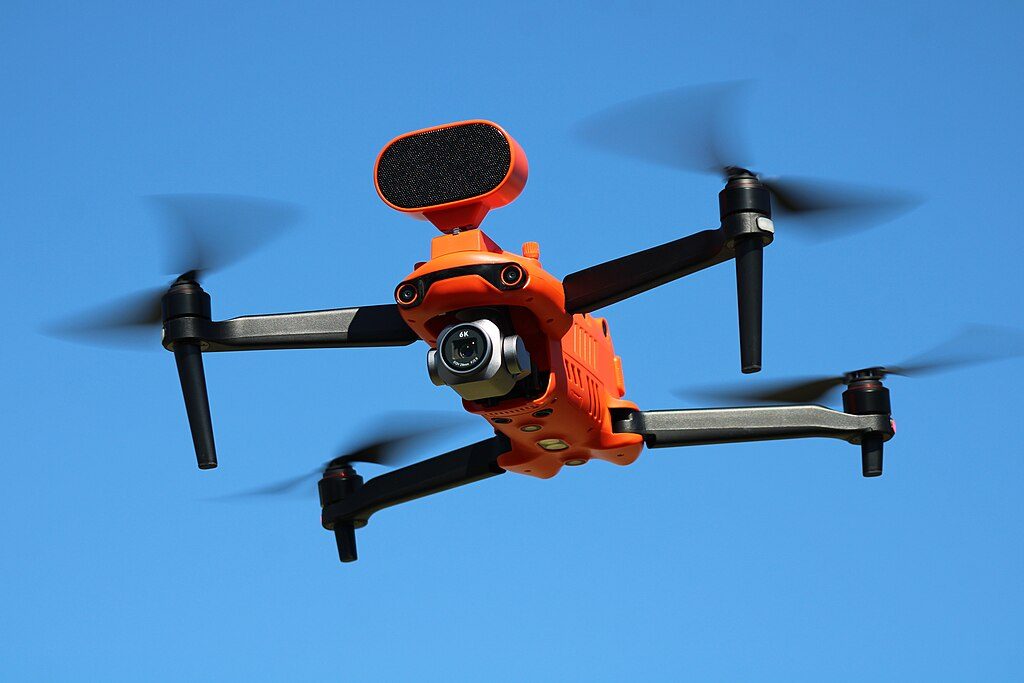The FY 2025 National Defense Authorization Act (NDAA) conference text has been released. The text includes critical language aimed at addressing potential national security risks posed by Chinese-made drones. Section 1709 of the legislation, titled “Analysis of Certain Unmanned Aircraft and Systems Entities,” outlines a structured approach for evaluating the security implications of communications and video surveillance equipment or services provided by companies such as DJI and Autel Robotics. This language reflects a negotiated version of Congresswoman Elise Stefanik’s proposed Countering CCP Drones Act, which called for Chinese-manufactured drones to be banned from utilizing FCC bandwidth.
Understanding Section 1709
Key Provisions and Requirements
Section 1709 mandates that within one year of the NDAA’s enactment, a designated national security agency must determine whether certain communications and surveillance equipment pose an “unacceptable risk” to U.S. national security or the safety of American citizens. The equipment subject to evaluation includes:
- Products from DJI Technologies and Autel Robotics.
- Equipment or services provided by any subsidiaries, affiliates, or partners of these companies.
- Entities engaged in joint ventures, licensing, or technology-sharing agreements with these companies.
If the agency identifies a security risk, the Federal Communications Commission (FCC) must add the equipment and services to its Covered List within 30 days. Once listed, these products would be prohibited from using FCC-regulated bandwidth, effectively barring their operation within U.S. communications networks.
If no determination is made within one year, the legislation requires that all specified equipment and services be automatically added to the Covered List. The provision further calls for detailed reports to Congress from the relevant national security agencies, ensuring transparency in the decision-making process.
Implications for Industry and Users
The potential addition of DJI and Autel products to the FCC Covered List has raised concerns among drone operators in industries such as public safety, infrastructure inspection, and environmental monitoring. Some users rely heavily on affordable, high-performing equipment from these manufacturers. A ban could disrupt operations, as comparable U.S.-manufactured alternatives are not yet available in the lower price range offered in the DJI and Autel product suites.
Lawmakers and security agencies, however, have repeatedly warned that reliance on Chinese-manufactured drones places US infrastructure at risk. As security agencies uncover more Chinese state led hacking operations, FBI Director Christopher Wray has been among those most vocal in pointing out the dangers of Chinese technology.
Some US drone manufacturers supported the move, saying that the domestic drone industry is ready to fulfill market needs. Daniel Hunt, CEO of Idaho-based xCraft commented: “xCraft supports measures to secure U.S. communications networks and restrict unsafe foreign drone equipment, highlighting the need for trusted domestic solutions. American manufacturers like us are ready to meet this demand, proving innovation and security go hand in hand. Regulation like this improves the landscape for American drone companies like xCraft.”
AUVSI’s Statement
The Association for Uncrewed Vehicle Systems International (AUVSI) has consistently supported efforts to address national security risks associated with foreign-manufactured drones. AUVSI President and CEO Michael Robbins said, “This year’s bill builds on the progress made in the FY 2024 NDAA, which extended the DOD’s PRC drone procurement ban to all U.S. government agencies. It further acknowledges the threats posed by PRC drones and ground robotics while advancing efforts to transition the U.S. away from such dependencies.”
At the same time, AUVSI has advocated for policies that promote a level playing field for U.S. and allied drone manufacturers while considering the operational needs of businesses reliant on existing technologies.
Balancing Security and Practical Needs
The conference text indicates that there will be at least a year before any definite action is taken on adding Chinese drones to the FCC Covered list.
As the process unfolds, it will be critical for policymakers to address the needs of service providers and agencies dependent on these technologies. Supporting the development of cost-effective, domestically produced alternatives will also be essential to ensure that operational and budgetary constraints do not hinder essential services.
For more information on the FCC Covered List, visit the Federal Communications Commission.
Want DRONELIFE news delivered to your inbox every weekday? Sign up here.
Read more:
- What is the Countering CCP Drones Act, and What Does it Mean for DJI Drones?
- Lawmakers Call for Declassification of National Security Risks Posed by Chinese-Made Drones
- Legislation Needed to Boost U.S. Drone Innovation, Says Industry Expert
- First Responders Oppose Inclusion of Countering CCP Drones Act in NDAA
Miriam McNabb is the Editor-in-Chief of DRONELIFE and CEO of JobForDrones, a professional drone services marketplace, and a fascinated observer of the emerging drone industry and the regulatory environment for drones. Miriam has penned over 3,000 articles focused on the commercial drone space and is an international speaker and recognized figure in the industry. Miriam has a degree from the University of Chicago and over 20 years of experience in high tech sales and marketing for new technologies.
For drone industry consulting or writing, Email Miriam.
TWITTER:@spaldingbarker
Subscribe to DroneLife here.
